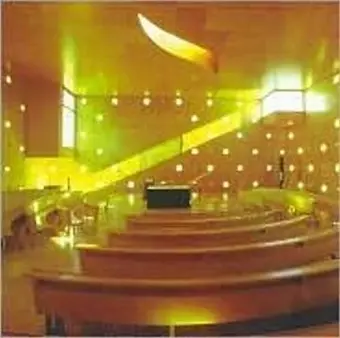Heinz Tesar: Christus, Hoffnung der Welt, Donau City, Wien
Opus 42 Series
Format:Hardback
Publisher:Edition Axel Menges
Published:20th Aug '02
Should be back in stock very soon

Text in English and German. The church rises to the challenge of providing a spiritual centre for Donau City, the new residential and commercial centre on the opposite bank of the Danube -- not as an act of coronation for the city in the sense of Taut's urban crown, as a temple or cathedral, but as miniature, as a demonstration of the power of the quiet as opposed to the loud, as an 'oasis in the diaspora', to use Karl Rahner's formulation about the parishes of the future. The building gives an impression of starkness: a hard cube, cut off at the corners, clad with sheets of black chromium steel. But it is only stark at first glance. A second glance shows that the hardness is a friendly hardness: because of the reflections that the material admits; because of the grid of the large-format sheets, to which the brightly gleaming drill-holes that cover the walls like fine gossamer respond; because of circular apertures that allow light to shine outwards after dark; because of large, rectangular windows in the receding corners that create a contrast with the closed quality of the building. Inside the starkness gives way altogether: a light space, which one comes into through an art-fully designed entrance. Originally a sparse covering for the space, which thrives mainly because of the light material -- birch wood -, because of the arrangement of the pews, which is as lively as it is peaceful -- segments of circles of different sizes, surrounding the dark syenite altar block in the form of an open circle -- and especially because of the wide range of circular light sources that render the introverted interior transparent, the large windows that create islands of light, the free-form aperture in the ceiling, which sends light gliding down on to the altar. Heinz Tesar's church continues a tradition of forward-looking modern church building, from Rudolf Schwarz's Fronleichnamskirche in Aachen via Egon Eiermann's Kaiser-Wilhelm-Gedachtniskirche in Berlin, Franz Fueg's Piuskirche in Meggen on Lake Lucerne to the new Herz-Jesu-Kirche in Munich by Allmann, Sattler and Wappner; and alongside all this there is also the tradition of a genuinely Viennese development of this theme, from Otto Wagner's Kirche am Steinhof to Ottokar Uhl's parish church Katharina von Siena.
ISBN: 9783930698424
Dimensions: unknown
Weight: 781g
60 pages